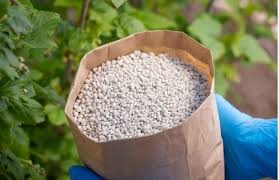
Nov . 21, 2024 06:03 Back to list
best npk fertilizer raw material
Understanding the Best NPK Fertilizer Raw Materials
NPK fertilizers, composed of Nitrogen (N), Phosphorus (P), and Potassium (K), play a crucial role in enhancing plant growth and crop yield. These essential macronutrients are vital for various physiological functions in plants, including photosynthesis, energy transfer, and the synthesis of nucleic acids and proteins. To create effective NPK fertilizers, it's important to harness high-quality raw materials. This article explores the best raw materials used in the formulation of NPK fertilizers and their significance in agricultural practices.
The Importance of Raw Materials in NPK Fertilizers
The effectiveness of an NPK fertilizer depends largely on the quality of its raw materials. High-quality raw materials ensure that the nutrients are readily available to plants, promoting optimal growth and development. Additionally, using quality materials can help maintain soil health, improve nutrient retention, and minimize environmental impact. Therefore, understanding the best raw materials for NPK fertilizers is essential for both farmers and agricultural scientists.
Key Raw Materials for NPK Fertilizers
1. Nitrogen Sources Nitrogen is critical for plant growth, influencing leaf development and overall vigor. Common nitrogen sources for NPK fertilizers include
- Ammonium Nitrate (NH4NO3) This fast-acting nitrogen source is widely used due to its high solubility and ease of application. It provides both ammonium and nitrate forms of nitrogen, making it effective for various plant species. - Urea (CO(NH2)2) Urea is one of the most concentrated nitrogen fertilizers available. It is converted into ammonium in the soil, serving as a slow-release nitrogen source. Its high nitrogen content makes it popular among farmers. - Calcium Nitrate (Ca(NO3)2) This source not only provides nitrogen but also calcium, which is important for plant cell structure and growth.
2. Phosphorus Sources Phosphorus is vital for root development, flowering, and fruiting. Suitable raw materials include
best npk fertilizer raw material

- Monoammonium Phosphate (MAP) MAP is a popular choice for its high phosphorus content and is often used as a starter fertilizer due to its quick availability. - Diammonium Phosphate (DAP) DAP has higher nutrient content than MAP and provides both nitrogen and phosphorus. It is ideal for promoting early growth and root establishment.
- Rock Phosphate This natural mineral source is less soluble but provides a slow-release form of phosphorus, making it suitable for long-term soil fertility.
3. Potassium Sources Potassium plays a critical role in photosynthesis, water regulation, and stress response in plants. Common potassium sources include
- Potassium Chloride (KCl) This is the most widely used potassium fertilizer due to its high solubility and effectiveness. It is cost-effective and suitable for a wide range of crops. - Potassium Sulfate (K2SO4) This sulfate-form potassium source not only supplies potassium but also sulfur, which is essential for protein synthesis in plants.
- Langbeinite (K2Mg2SO4) A natural mineral source, langbeinite contains potassium, magnesium, and sulfur. It is useful in soils that require these additional nutrients.
Conclusion
Selecting the best raw materials for NPK fertilizers is crucial for achieving high agricultural productivity and sustainable farming practices. The right combination of nitrogen, phosphorus, and potassium sources can lead to flourishing crops and improved soil health. When formulating NPK fertilizers, it is important to consider the needs of specific crops, soil conditions, and environmental factors. By utilizing high-quality raw materials, farmers can ensure that their crops receive the necessary nutrients for optimal growth and yield, ultimately contributing to food security and sustainable agricultural practices. As agriculture continues to evolve, ongoing research into new and enhanced raw materials for NPK fertilizers will be essential in meeting the challenges of feeding a growing global population.
-
Premium 8 12 16 Fertilizer – High-Efficiency Compound & Granular NPK Supplier
NewsJun.10,2025
-
High Quality Agricultural Grade NPK Fertilizer Manufacturer & Supplier Reliable Factory Price
NewsJun.10,2025
-
Organic Fertilizer for Corn Boost Yield Sustainably
NewsJun.10,2025
-
Organic Fertilizer for New Plants Natural Growth Boost & Eco Nutrients
NewsJun.10,2025
-
Optimized Hydroponic NPK Fertilizer – Fast Growth & Nutrients
NewsJun.09,2025
-
Top-Rated NPK Fertilizer for Fruit Trees - Boost Growth & Yield
NewsJun.09,2025
